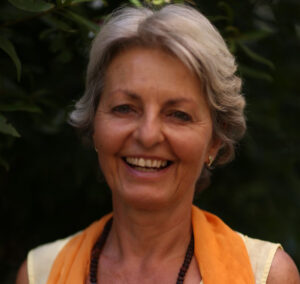Understanding the Mind-Body Connection
Stress and anxiety are two of the most common struggles in today’s society. Whether it’s workplace pressure, personal relationships, or the constant hum of digital life, emotional distress takes a toll on both our mental and physical health. But what if your body could literally tell you what it needs to restore balance?
Kinesiology provides a unique approach to stress reduction by combining elements of Eastern energy techniques with Western science. It’s a holistic and empowering practice that uses muscle testing, energy balancing, and other methodologies to identify the root causes of imbalances, offering practical solutions to restore calmness and control.
This post will break down how kinesiology works, explore its benefits for stress and anxiety, and share actionable insights to help you incorporate kinesiology into your wellness routine.
How Kinesiology Alleviates Stress and Anxiety
1. A Physical Response to Emotional Stress
Stress isn’t just in your mind. It’s a full-body reaction that affects your muscles, nervous system, and energy flow. When we experience prolonged stress, tension builds up in our bodies, often manifesting as headaches, muscle aches, and fatigue. Kinesiology works by acknowledging this mind-body connection.
Through techniques like muscle testing, practitioners can pinpoint where stress is being held in the body. For instance, areas of muscle weakness may signal unresolved emotional patterns or external stressors affecting physical health. By addressing these blockages, clients often experience both emotional relief and physical release.
2. Backed by Science
Kinesiology’s approach aligns with what science tells us about chronic stress. Prolonged stress activates the body’s “fight or flight” response, flooding it with hormones like cortisol. Over time, this can hinder immune function, disrupt sleep, and impair cognitive clarity. Techniques in kinesiology help to reset the nervous system, moving clients out of this reactive state and into one of balance and relaxation.
[Expert opinion]: “Kinesiology’s ability to assess and address imbalances holistically is what sets it apart. By reducing stress responses at their root, we can help clients feel better physically and emotionally,” says [Insert Name], certified kinesiologist.
Key Kinesiology Techniques for Stress and Anxiety
1. Muscle Testing
Muscle testing is at the heart of kinesiology. Here’s how it works:
- The practitioner applies gentle pressure to a muscle while the client holds a particular thought or intention.
- The body’s response signals areas of imbalance or emotional blockages.
For example, a weak muscle response when thinking about a certain stressor might indicate unresolved tension in that area. Through muscle testing, practitioners effectively “communicate” with the body to prioritise healing efforts.
2. Energy Balancing
Energy balancing techniques are inspired by Eastern healing traditions like acupressure and the concept of meridians. Kinesiology practitioners may use techniques such as tapping, holding acupuncture points, or guided visualisation to restore the body’s natural energy flow.
These techniques calm the nervous system, encouraging relaxation and aiding emotional release. They also help “ground” clients, creating a sense of stability and calm amidst external chaos.
3. Additional Interventions
Kinesiology can also include assessments of lifestyle factors, such as nutritional deficiencies or sleep patterns, that contribute to stress. These insights often come from indications provided during muscle testing, helping clients make sustainable, positive changes.
The Benefits of Kinesiology for Stress and Anxiety
1. Emotional Resilience
One of the most notable benefits of kinesiology is its ability to nurture emotional resilience. By clearing blockages related to stress, clients report feeling mentally stronger and more capable of handling challenges. Instead of reacting emotionally to triggers, they respond in a balanced and empowered way.
2. Improved Physical Health
Stress can wreak havoc on the body, causing tension, digestive issues, and even weakened immunity. Kinesiology addresses these physical manifestations, offering relief from stress-related conditions like headaches, muscle stiffness, or fatigue. Many clients find they sleep better and wake feeling more refreshed after sessions.
3. Personalised Care
The beauty of kinesiology is its tailored approach. Where one client may need emotional release, another may benefit from energy balancing techniques. This personalised care ensures that every individual’s unique needs are met, creating lasting transformation.
Incorporating Kinesiology into Your Wellness Journey
1. Find the Right Practitioner
When searching for a kinesiologist, look for certifications, reviews, and areas of expertise. Don’t hesitate to ask questions about their approach before scheduling a session.
2. Prepare Before Your Session
Get the most out of your kinesiology session by reflecting on your key stressors and wellness goals. Communicate these openly with your practitioner so they can tailor the session to meet your unique needs.
3. Take It One Step Further
Consider pairing kinesiology with complementary practices such as mindfulness, yoga, or meditation. These methods work synergistically with kinesiology to stabilise your mind and body.
4. Explore Educational Resources
If you’re curious to learn more, read books or watch tutorials about kinesiology. Ease of Life Kinesiology’s website offers numerous resources to guide you on your path to wellness.
Reflective Summary
Kinesiology offers a powerful and holistic approach to managing stress and anxiety. By combining muscle testing, energy balancing, and personalised care, it delivers relief that goes beyond surface-level symptoms. The practice supports emotional resilience, promotes physical well-being, and helps uncover the unique causes of stress for each individual.
Are you ready to take control of your mental health and find more balance in your life? Exploring kinesiology may just be the first step toward lasting wellness. Schedule a session or explore local resources to begin your healing today.


